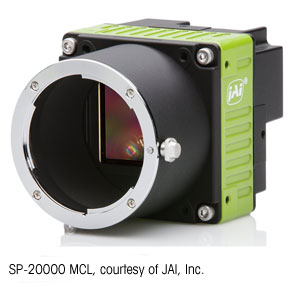
Color machine vision has its challenges.
Systems can produce three times the data (or less than one-third the resolution) of a monochrome camera solution. Color can introduce more potential sources for imaging errors, more complexity, more cost, and require careful engineering that reduces the system’s flexibility to deal with lines that make products of varying shape, colors, and size. In fact, if designers can find a way to use filters and lighting to measure a colored area using monochrome cameras, they usually do.
Today, printed circuit boards require more color vision solutions because the color of a component helps to identify each part. Plugs and connectors are color coded, and at the same time, the board is tracked using a black-and-white barcode. “These applications used to be done with a high-resolution monochrome camera, but now, you need to be able to sense color to make sure the right component and connector are in the right place,” Kinney explains. “The barcode will usually be located at the edge of the frame. If you use a single-chip color camera, you have to be concerned about color shading and halos at the edge of the image, and it’s made worse if you use cheap optics.”
refer to:http://www.visiononline.org/vision-resources-details.cfm/vision-resources/Is-Your-Machine-Vision-System-Color-Blind/content_id/4333
